Vessel #1
My first vessel I chose to work off of the base code that we wrote in class. I wanted to try and create a class ceramic vessel shape but with a twist, literally. I looked for inspiration in my camera roll and I found this photo of a Qing Dynasty Chinese vase from when I visited the NYMet. I loosely based my design on this shape, taking inspiration from the long neck/spout and the rounded main body. I added a fourth radius to create the extended spout. This print took 2 hours and 59 minutes with a 10% infill.
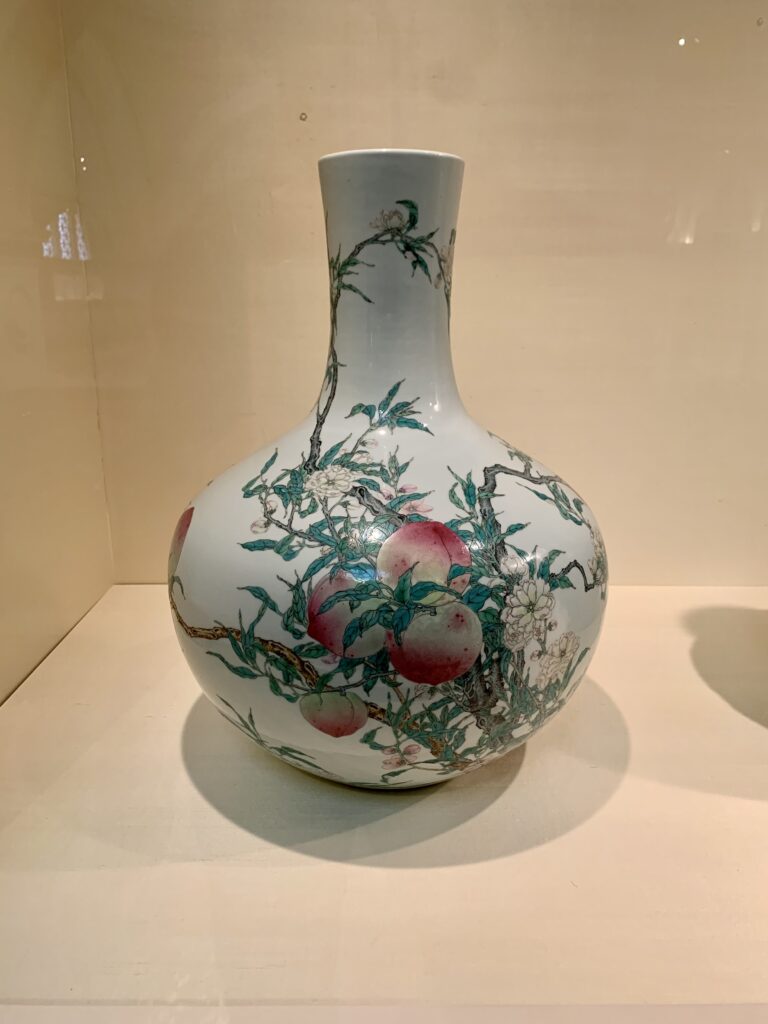


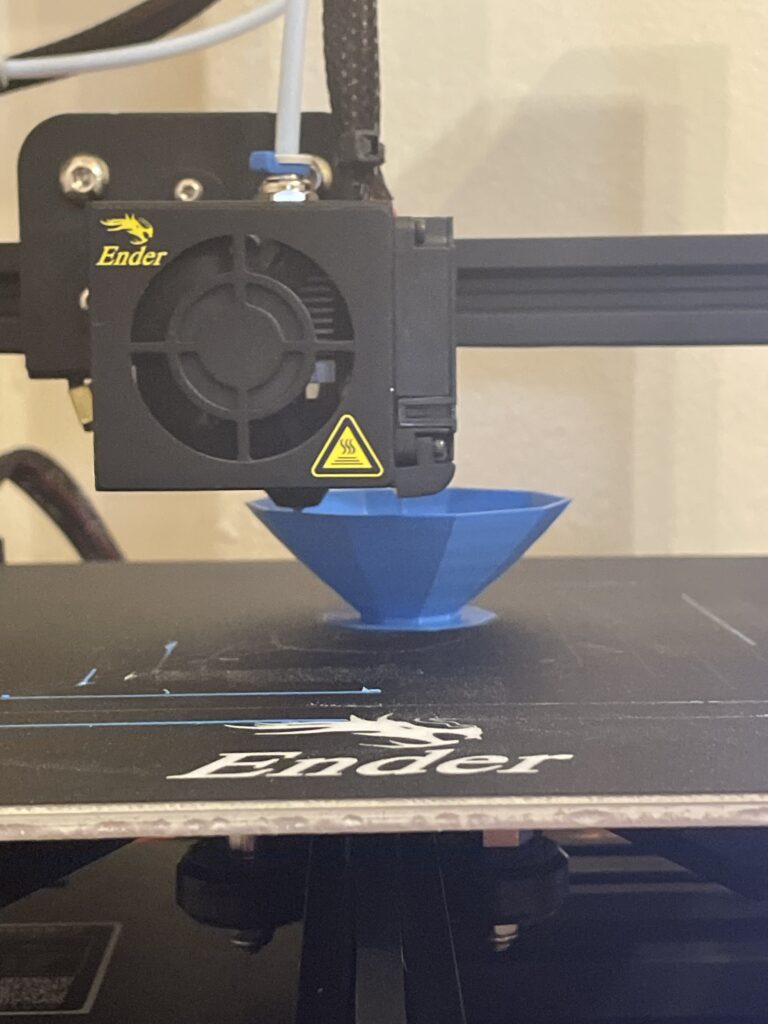
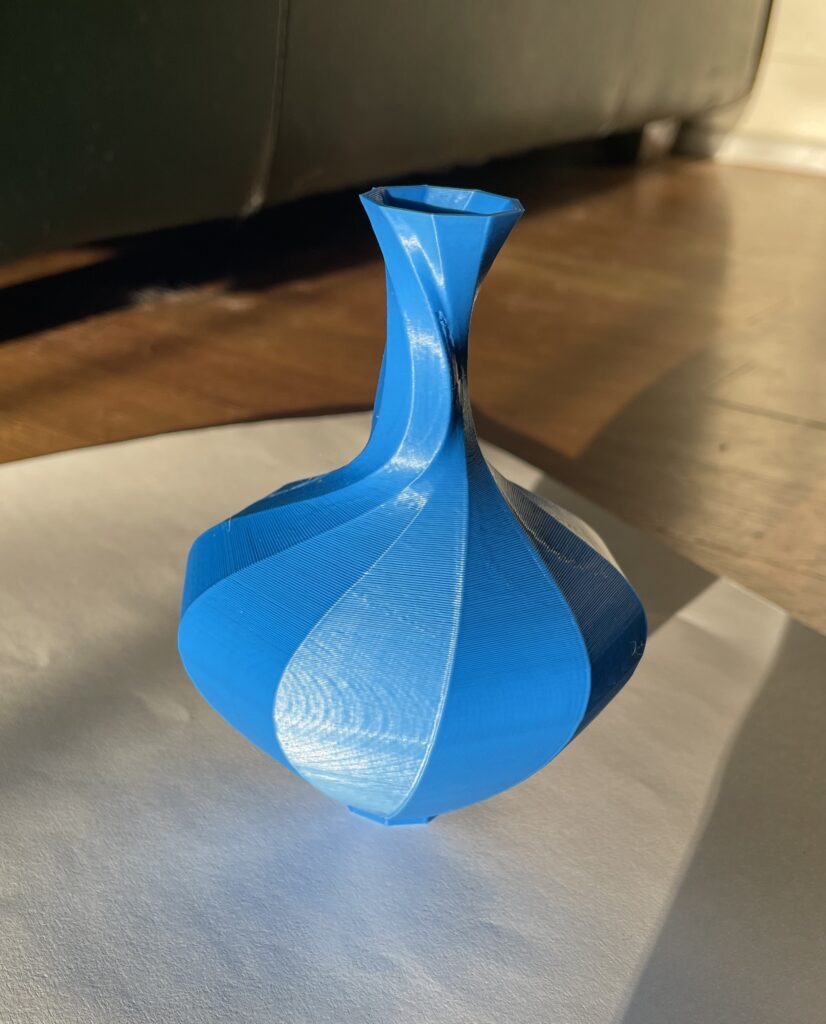
I thought of experimenting with branching for this vase, but ultimately decided not to. This progress picture is what I sent to my friend telling her I could hang out now because I figured if it had not collapsed at this point, it should be alright (and I was correct!).
Vessel #2
For my second vessel I took inspiration from my own ceramic work. I love creating the bubble-like shapes when throwing, so I decided to create a 3D printed sister for this vase that sits on my kitchen table. I want to try and print a lid for this vessel as well, which is why I ended up opting for the longer neck. I felt that it would aesthetically better suit a lid on top. I added three more radii to create this shape. This print took 3 hours and 14 minutes.
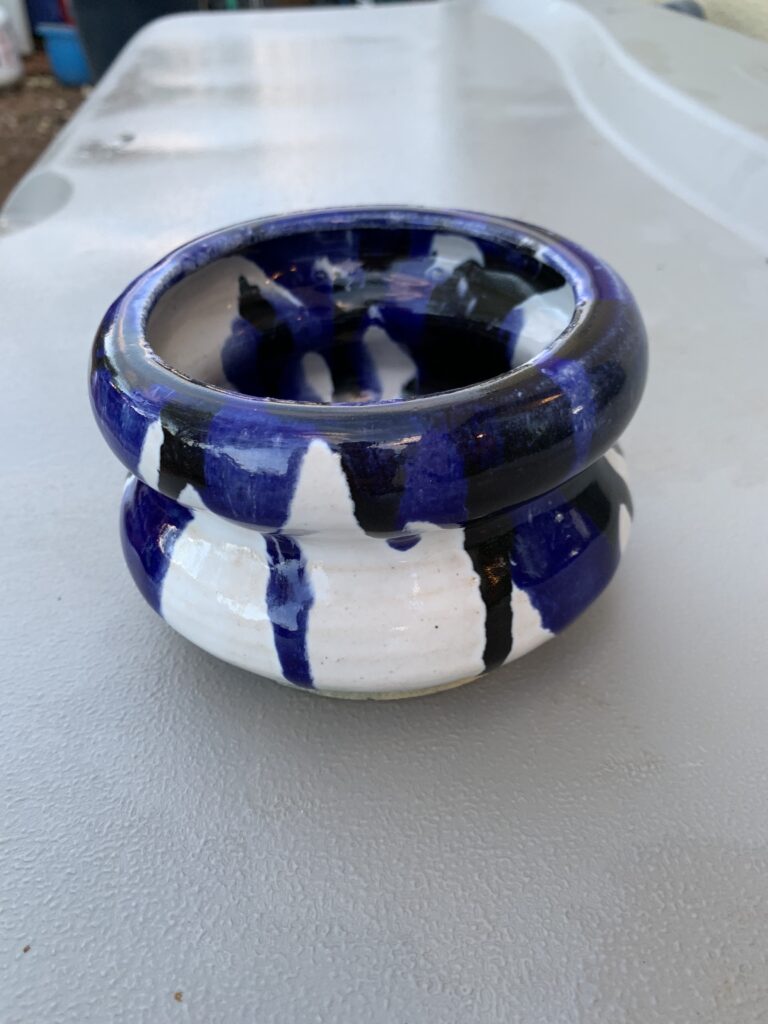


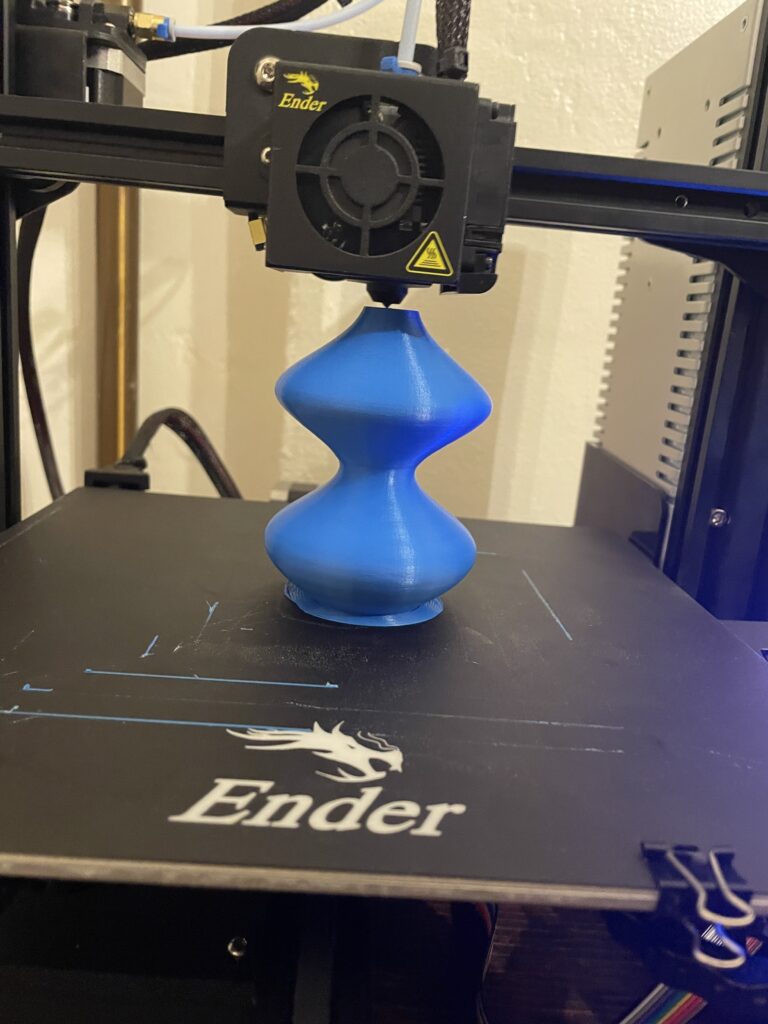
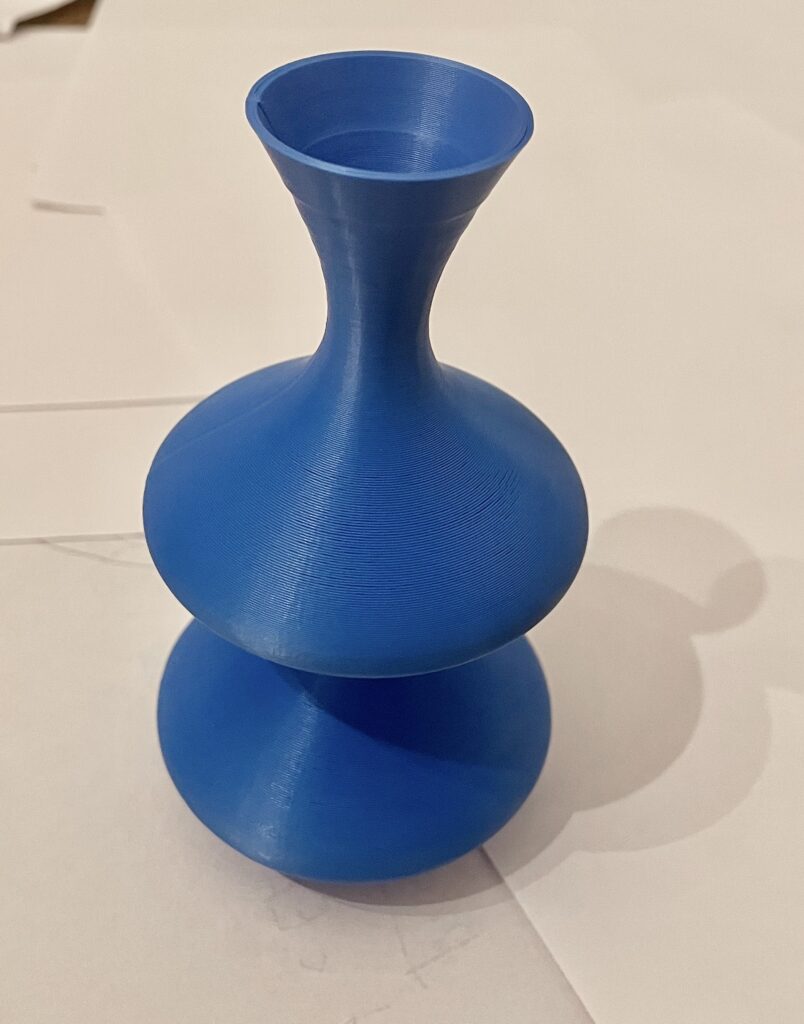
Vessel #3
For this vessel I decided to play around in grasshopper until I found a shape I liked. Because my other two vessels had skinny/narrow tops, I knew I wanted to try something with a wide mouth. I experimented with the triangle gear parameters and I made a shape that reminds me of a pumpkin. This print took significantly longer than my other two, at 10 hours and 17 minutes.


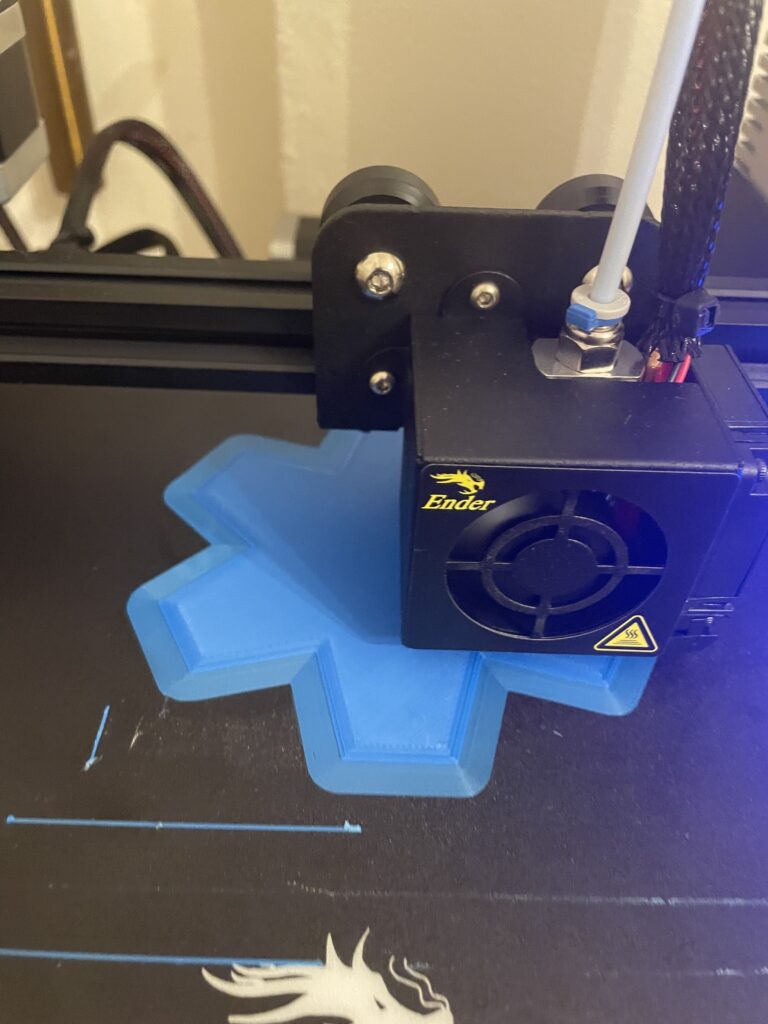
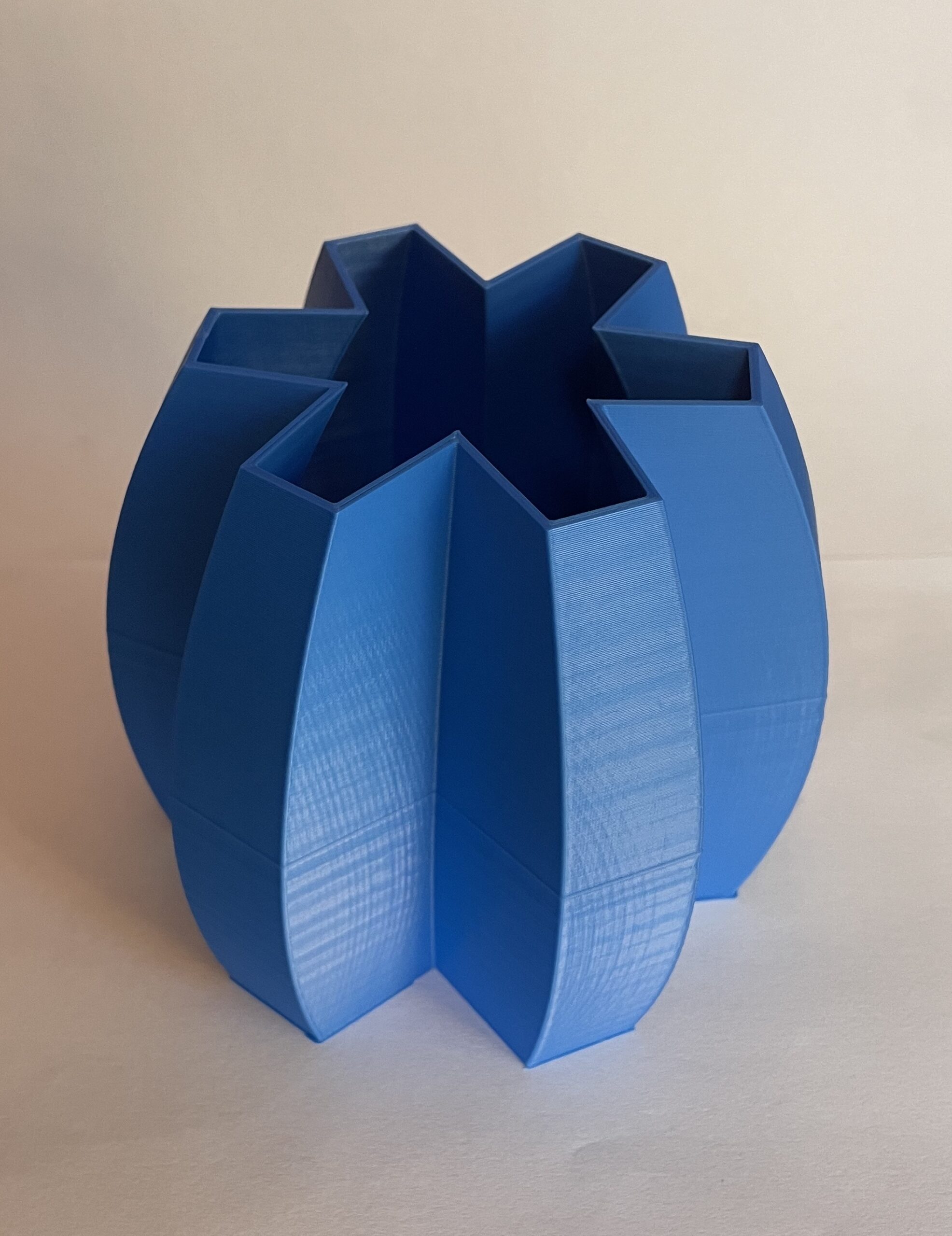
Design Process Reflection
Overall I enjoyed creating these parametric vessels. I have never created anything in a design process like this, so it was certainly a learning experience for me. I remember when I took my first printmaking class my professor emphasized that printmaking was a 2-1 creation process. In the design process for 2-1 creation, there is no immediate feedback of what you are creating and how it looks, versus say drawing. Another example of this would be ceramics, and now I would add in 3d printing as well. No matter how accurate the rendering is in Rhino or Cura, seeing the prints in person is seeing something completely new. I enjoy seeing this as it is a big reveal and makes me feel proud, but also I am able to see the errors that cannot easily be fixed.
I liked the easy manipulation that the code allowed. By just increasing one ‘n’ parameter you have an entirely new shape. However, I do feel like the bugginess and slow loading of Grasshopper discouraged me a bit at times. Because my coding isn’t the strongest, I think it actually would have been faster for me to make my vessels manually in Rhino.
Creative Agency Reflection
Coming from an art background, my approach to this assignment was an artistic one, and I immediately had ideas of what I would want to create. My ceramics background especially inspired what I chose to design due to my familiarity of making shapes in a similar family. A lot of my art is very loose and asymmetrical, so this was a big switch from how I would approach making a vessel if prompted to me in any other creative environment. I enjoyed playing around with the shapes and seeing what I could make, but I did opt to take inspiration from ceramics pieces. However, my final print was just experimenting, and I think it is my favorite out of the bunch.
I felt limited by my coding capabilities and that got frustrating after a bit. Although I haven’t made any yet, I really want to experiment with making a lid for my vessel, which I am going to make in Rhino to have a little more creative freedom. Last note, I really wish I chose a different filament color, the blue is starting to bug.
Hi Astrid,
I think the execution of your initial ideas for Vessels 1 and 2 turned out really well. Both pieces clearly reflect your inspirations while still being unique pieces. The shape of your third vessel is fun! The slow updates in Grasshopper are definitely not ideal. In addition to Leah’s suggestions on how to decrease the solution time, I’ve found that disconnecting the lofting block is a useful way to change parameters quickly. You can quickly see the general effect they have on the curves and then reconnect the block to check out the actual shape.
Thanks Liz! I actually did turn off/disconnect the lofting block, but I’ll try again and see how it works for the next assignment. Thanks for the tip 🙂
Hi Astrid,
I like your process of designing, being able to recreate an inspiration and adjusting the shape is a great way to start getting comfortable with code and printing. I do agree your last vase does look like a pumpkin and I’m surprised it took 10 hours i would have never guessed. I also agree that the model in Cura/Rhino compared to the model in person does give a new perspective, it also made me feel accomplished after each print.
Thank you Alan! I really don’t know why the print took so long, maybe because of the longer radius of the spikes?
Hey Astrid, I just wanted to congratulate you on producing some very fine models and prints. I think it is really cool seeing the objects that you took inspiration from in your design process. I think the fact that you already have previous experience in ceramic work helped you to imagine some great vase and vessel shapes for this project. I am very much into Pottery and I think that some of your design techniques would be very useful for me to utilize in my own projects. I had a similar process to you in my design phase where I would generate a lot of vessels just to see how changing parameters made them look. I enjoyed working with Rhino and grasshopper as it allowed me to get visualizations before I had to print. I can imagine it would be a different process when you are working with ceramics or a different type of physical material. Overall, I really liked your project and I am looking forward to the works you will produce in the future!
Thanks for the comment Wayne! The ceramic insight definitely is valuable, but yes it is a very different process. The freedom to generate a lot of option prior to committing to a final peace was a nice switch up from having to commit early on.